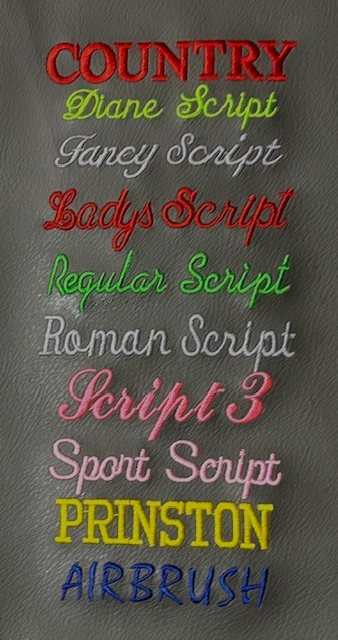The Art of Custom Needlework: Unlocking the Secrets to Creating Distinct and Unforgettable Layouts
Needlework, a craft soaked in practice and artistry, holds within its intricate stitches the power to transform fabric into a canvas of special expression. The tricks to producing custom-made needlework styles that mesmerize the eye and leave an enduring impact hinge on a fragile equilibrium of method, imagination, and interest to detail. As we explore the world of custom needlework, we reveal the nuanced interaction in between thread choice, stitch complexity, and design customization that raises a simple garment to a work of art. Join us on a journey through the art of custom needlework as we unwind the secrets behind crafting really memorable and distinctive creations.
Picking the Right Needlework Threads
When selecting embroidery threads, what crucial variables should you take into consideration to ensure the best results for your custom designs? The choice of embroidery thread is essential in identifying the final outcome of your embroidered design.
Thicker threads can add dimension and texture to your layout, while finer threads are perfect for complex details and small message. Furthermore, considering the shade fastness and washability of the thread is essential to ensure that your custom-made designs keep their high quality and vibrancy over time.
Discovering Different Stitch Techniques
To dig into the world of 'Exploring Various Stitch Techniques', one need to understand the details and nuances that each sewing method offers the art of embroidery. Various stitch strategies not only include visual interest yet also add to the overall structure and measurement of the design. One prominent stitch technique is the satin stitch, which includes very closely packed parallel stitches to produce a smooth and glossy surface area, ideal for completing forms and producing vibrant describes.
On the various other hand, the backstitch is a versatile technique usually used for detailing and including great information. It involves stitching backwards to develop a solid line of embroidery. Furthermore, the French knot stitch includes a responsive component to layouts, perfect for creating textured accents like blossom centers or decorative touches.
Checking out different stitch methods permits embroiderers to have fun with light, darkness, and deepness within their layouts, elevating the visual appeal and artistic high quality of their needlework tasks. By understanding numerous sewing approaches, one can open endless possibilities for creating unique and memorable custom embroidery pieces.
Incorporating Personalized Style Aspects
Having checked out the complexities of various stitch strategies such as the satin stitch, backstitch, and French knot, the focus currently moves towards including individualized style components in custom-made embroidery tasks. Customized style elements play an essential duty in making embroidery tasks really unique and remarkable.
One more means to integrate personalized style elements is by including signs or motifs that hold unique meaning to the recipient or show their interests and individuality. For example, including i loved this a favorite blossom, pet, or hobby-related sign can make the needlework design a lot more purposeful and individualized. Furthermore, selecting shades that resonate with the recipient or straighten with the intended style can better enhance the personalization of the needlework task.
Mastering the Art of Color Sychronisation
One trick aspect of shade coordination is comprehending shade theory. This consists of understanding just how different colors connect with each other, the emotions they share, and how they can be integrated to develop visually attractive layouts. By applying color concept concepts, embroiderers can create harmonious shade schemes that enhance the general appearance of the layout.
Additionally, focusing on comparison is essential in shade control. Utilizing contrasting colors can assist particular elements of the design pop, enhance clarity, and develop an aesthetically vibrant embroidery piece. By grasping the art of color sychronisation, embroiderers can elevate their styles and produce remarkable items that reverberate with customers and viewers alike.
Enhancing Texture With Advanced Embroidery Stitches

French knots, as an example, are perfect for adding little, increased dots to your style, mimicking the look of beads or creating a textured surface. Bullion knots, on the other hand, can be utilized to produce twisted, ropelike aspects that include an elegant feel to the embroidery. Seed stitching involves tiny, scattered stitches that can complete areas with a multicolor structure, while turkey work produces fluffy, dimensional accents similar to animal fur or foliage. Explore these innovative embroidery stitches enables you to press the limits of standard needlework and produce really distinct and visually appealing textures in your designs.
Conclusion
To conclude, the art of custom embroidery includes a combination of choosing the appropriate threads, checking out different stitch techniques, including tailored style elements, understanding color coordination, and boosting structure with advanced stitches. By recognizing and executing these key aspects, embroiderers can create one-of-a-kind and memorable layouts that showcase their creative thinking and skill. Needlework lovers can open the tricks to developing attractive and bespoke items that stand apart and leave a long lasting impact.